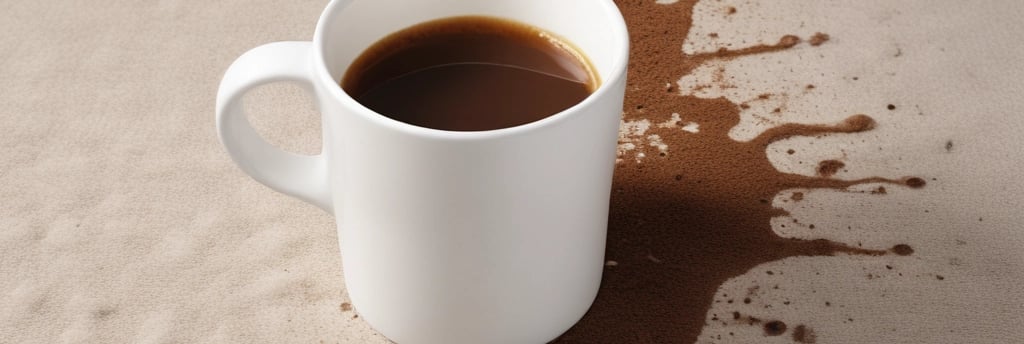Common Carpet Stains and How to Remove Them Safely
Matt Brown
12/27/20244 min read


Introduction to Carpet Stains
Carpets are a fundamental element of interior design, providing comfort and aesthetic appeal in homes and offices alike. However, they are also prone to various types of stains arising from everyday activities. Whether it is spillage from food and beverages, muddy footprints tracked in from outside, or pet accidents, each event can contribute to the common problem of carpet stains. The diverse nature of these stains necessitates immediate attention to prevent long-lasting damage and maintain the carpet's overall appearance.
Prompt treatment of stains is crucial. When a stain occurs, the fibres of the carpet can absorb the offending substance quickly, making it increasingly difficult to remove over time. Neglecting to address stains promptly can lead to discolouration, permanent marks, or even unpleasant odours developing within the fibres. Furthermore, some stains, such as those that are oil-based or dye-based, can penetrate deeper, becoming entrenched within the carpet padding. Regular cleaning and immediate stain treatment can significantly extend the lifespan of a carpet, ensuring it remains a beautiful focal point of the room.
It is also essential to consider the materials being used for cleaning. Some household cleaning agents can cause more harm than good, potentially damaging the carpet fibres or altering its colour. Therefore, understanding which products to use is crucial for effective stain removal without compromising the carpet’s integrity. In certain instances, particularly when faced with stubborn or extensive stains, hiring professional carpet cleaning services may be advisable. These experts possess specialised knowledge and equipment that can safely restore the carpet to its original condition.
Common Types of Carpet Stains
Carpet stains are an inevitable part of household life, and understanding the most common types can assist in their effective management. One of the most frequently encountered stains is that of coffee. The dark colour of coffee can quickly seep into the carpet fibres, making it difficult to remove entirely without prompt action. Another common culprit is red wine, which can leave behind deep, vibrant colours that can seem permanent if not treated immediately.
Pet stains present their own unique challenges. These stains not only involve visible marks but also odours that can linger if not treated appropriately. Mud is another prevalent issue, particularly in homes with pets or children. This organic debris can not only stain the carpet but also contribute to further dirt accumulation if not cleaned promptly.
Ink stains can occur from pens, markers, or other writing instruments, and they can be particularly challenging due to their dark pigmentation and often fast-drying properties. Grease stains, often the result of food preparation or mishaps, can be extremely tricky as they can cause the fibres to clump together, necessitating specialised removal techniques.
Fruits and fruit juices can also leave stains, thanks to their natural pigments. These stains are often acidic and can lead to discolouration if left untreated. Blood stains, particularly in households with active individuals or pets, require immediate attention and specific methods to effectively lift without promoting further spread.
Food spills, such as sauces or snacks, frequently lead to various stains on carpets. Their complex compositions can vary widely, adding to the diversity of challenges when it comes to removal. Lastly, dye stains, whether from hair products or art materials, can be challenging due to their intense colours and chemical compositions.
By recognising these common types of carpet stains, homeowners can better prepare themselves for effective cleaning strategies, ensuring their carpets remain in excellent condition.
Practical Tips for Removing Carpet Stains
Removing carpet stains effectively requires a systematic approach that minimises damage while maximising cleanliness. To begin with, it is crucial to identify the type of stain and the carpet fibre involved. Natural fibres like wool may require different treatment than synthetic fibres such as nylon or polyester.
For removing water-soluble stains, such as food spills or soft drinks, start by blotting the area with a clean, dry cloth to absorb excess liquid. Avoid rubbing, as this may spread the stain further. Next, create a solution using one tablespoon of dish soap mixed with two cups of water. Dampen a cloth with the solution and gently dab the stained area from the outer edges inward. Continue blotting with a clean, dry cloth to lift the stain, repeating the process as necessary.
When dealing with stains like red wine or coffee, a mixture of vinegar and water can be particularly effective. Combine equal parts white vinegar and water, and apply the solution to the stained area. Blot again with a clean cloth, rinsing the cloth periodically to avoid reapplying the stain. For stubborn stains, consider sprinkling baking soda over the area after applying the vinegar solution. This will create a fizzing reaction that can help lift the stain out of the fibres.
For deeper stains that persist despite your best efforts, specialised stain removers may be required. Look for products specifically designed for your carpet type, and always test them in an inconspicuous area first. Follow the manufacturer's instructions for application, and ensure proper ventilation when using chemical cleaning agents.
Finally, be sure to rinse the area with water after treatment to remove any cleaning residue, and always allow the carpet to dry completely to prevent mould growth. Empowering oneself with these practical tips will enable anyone to tackle common carpet stains effectively and safely.
When to Call a Professional
Carpets can be a significant investment in your home, and maintaining their appearance and integrity is essential. While many minor stains can be treated with DIY methods, there are situations where professional carpet cleaning services become necessary. One of the primary indicators that you should consult with a professional is persistent discolouration. If you notice that a stain remains despite your best cleaning efforts, it may have penetrated too deeply into the fibres, necessitating a more advanced cleaning approach.
Additionally, certain types of stains, such as those caused by bleach or heavy ink, require specialised treatments that are often not available in home remedies. Bleach stains can discolour the carpet, and while some may attempt to cover these spots with dye or colorants, professionals have the tools to restore the carpet effectively. Similarly, ink stains can set quickly, and unless addressed immediately and appropriately, they can become permanent without professional intervention.
Furthermore, if the extent of the damage to your carpet is beyond practical home remedies, it is advisable to engage the services of a carpet cleaning expert. This includes scenarios where water damage or mould has occurred, as these conditions can threaten both the integrity of the carpet and the health of your household. Regular professional cleaning not only prolongs the life of your carpet but also helps in preventing stubborn stains from developing in the first place.
For residents local to Barnsley and West Yorkshire, I am your local expert and can be on hand for any of your stain and maintenance needs. Investing in professional cleaning can save you both time and effort while ensuring that your carpets remain fresh and free of deep-rooted stains.
